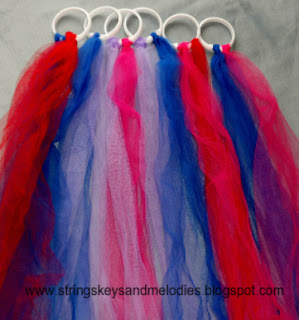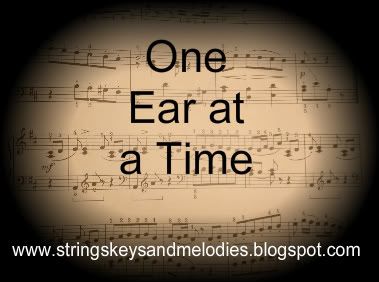“Children can learn almost anything if they are dancing,
tasting, touching, hearing, seeing and feeling information.” -Jean Houston, Educating the Human Brain
I love this quote. It
makes me think of a perfectly happy child spinning in circles as she is singing
and dancing barefoot in a field of green grass and wild flowers with an
orchestra of musicians playing beautiful music for her. Wouldn’t that be the ideal way to learn? Carefree and happy.
Unfortunately that is not the way it usually works out for
our children.
So many of my students have a hard time listening. Some can’t hear well. Some have trouble processing the information
that is spoken to them. Some are so
easily distracted they can’t pay attention to what is being said because they
are off doing something else.
This week I was reading a book that explained that some
children can’t process information when it is spoken to them. But when the same instructions are sung to
them, they are better able to understand and follow through.
Children with attention problems often have hearing
problems. And it is possible that one
ear is better at hearing than the other.
So you need to speak or sing into each ear, one at a time.
In one of my singing classes, there are a couple of 7 year
old girls who have a hard time paying attention. I know they wait all week for singing
class. They love singing and learning
new songs. But when they see each other
they can’t keep their hands off each other and start doing cartwheels and
pulling on each other for the entire hour.
Now, in my classes we start off with a lot of moving and dancing. So I am not expecting them to sit in chairs
and pay close attention. I understand
children need to move and stomp and feel the rhythms with their entire
bodies. But when it is time to sing I
still want them to sing.
So I decided to do an experiment.
Deliberate Movements
Instead of watching them do random movements such as
cartwheels and flips, I initiated the movements for each voice warm-up. During one warm-up, we held hands and swung
them back and forth to the beat. The
constant movement helped them pay attention to their singing.
Singing and Speaking in Each Ear
During other warm-ups, I walked around the room bending down
and singing in each girl’s ear. This
worked like a miracle! One student, who
always sings too high, off pitch, matched my voice as I was singing in her
ear. It got her attention and she was
able to hear my voice and sing on pitch.
I continued singing in their ears, going from one ear to the
other so that both ears got a chance to hear my voice up close. I loved how easy it was for them to then sing
on pitch the rest of the class time.
Singing Directions
This week, I also tried singing instructions to my classes
instead of just saying them. It did get
the children’s attention faster and they were quicker to jump up and follow me
to the next activity.
Singing for Speech Therapy
I decided to try the ear experiment at home with my 4 year
old daughter. She has a hard time saying
some of her sounds. We have been working
on the” th” sound for words like the, that and this.
I leaned over close to her ear and sang “the” to the tune of
“Mary Had a Little Lamb”. Then I leaned over to the other ear and sang the same
thing. When I was done I asked her to
say “the” and she said it exactly how she heard me say it! It was wonderful. She has not continued to say “th” sounds
correctly in her regular speech but when I chant them in her ear she will say
it correctly. So she can do
it! She just needs to keep practicing
and hearing it clearly spoken to her.
Some children have a hard time listening. Some can’t hear well. Others have a hard time processing what is
said to them. Some are easily distracted. One way to help these children is to sing to
them, one ear at a time!
Wouldn’t it be a wonderful world if everyone sang to their
children as they gave directions and taught them new things? Our children could be dancing and singing as
they were learning. A lot more happy and
carefree!








